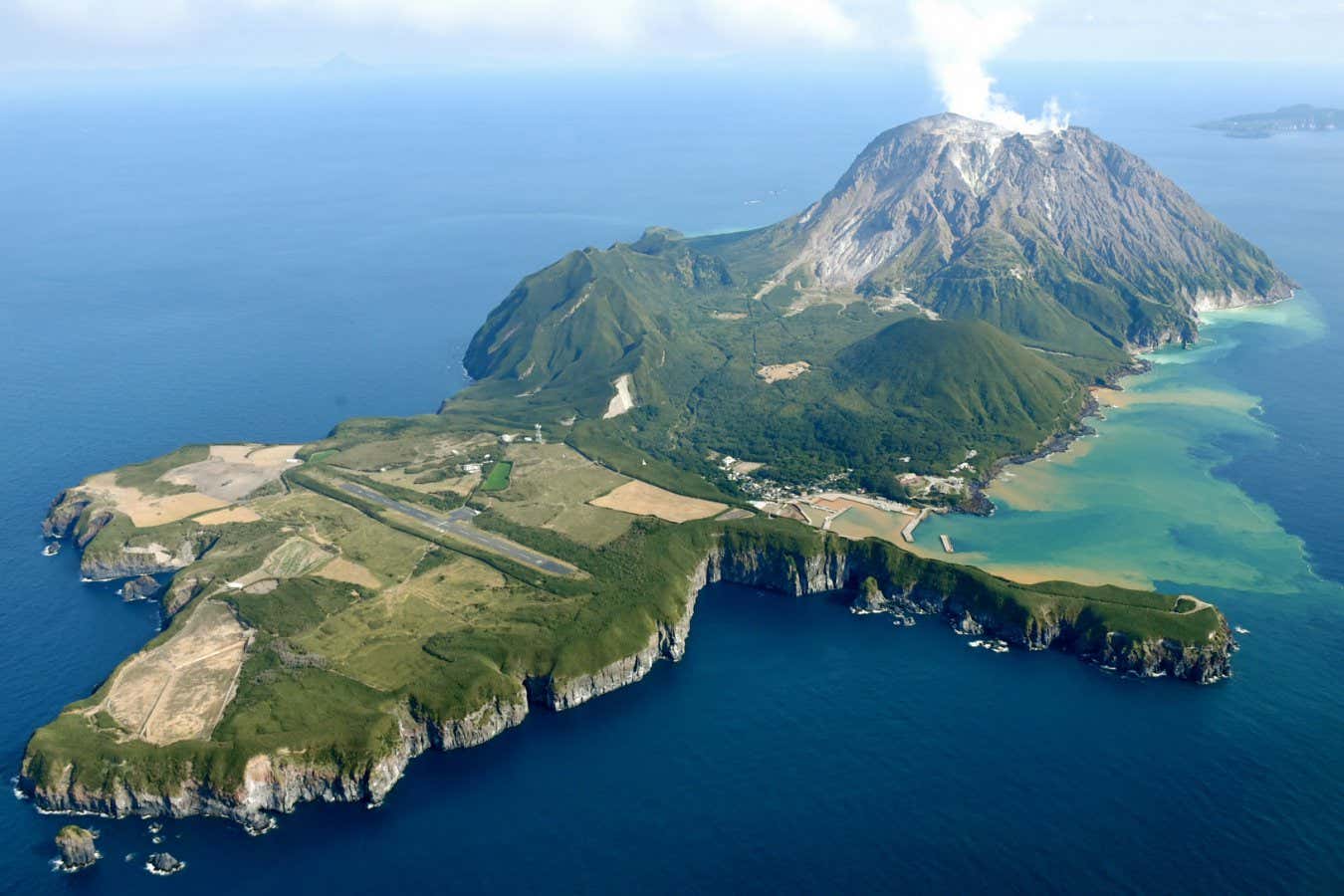The Kikai-Akahoya eruption of an underwater volcano off the coast of Japan ejected enough material to fill Lake Tahoe twice, three times as much as the eruption of Mount Tambora in 1815
By Alex Wilkins
21 February 2024
Iōjima Island, itself volcanic, sits at the edge of the huge underwater Kikai-Akahoya volcano caldera
The Asahi Shimbun via Getty Images
The largest volcanic eruption of the current geological epoch happened underwater off the southern coast of Japan about 7300 years ago. The blast produced more than three times as much material as the largest modern eruption known, that of Mount Tambora, which exploded in Indonesia in 1815 and caused such drastic climate changes that it led to the “Year Without a Summer” in 1816.
The new record-holder, the Kikai-Akahoya eruption, came from a submerged caldera in a region of sea near the Japanese island of Kyushu.
Read more
Giant magma flow in Iceland was the fastest ever recorded
Advertisement
The eruption’s devastating consequences for humans living on nearby islands have been documented by geologists and archaeologists, and analysis of deposits of volcanic ash had indicated that the blast was one of the largest eruptions of the current geological epoch, the Holocene, which began 11,700 years ago.
However, the blast’s origins and size were uncertain because of the difficulty in accessing the undersea caldera, the crater that formed after the volcano erupted, and volcanic deposits on the seabed.
Now, Nobukazu Seama at Kobe University in Japan and his colleagues have calculated that the Kikai-Akahoya eruption produced a far larger amount of rock and ash underwater than previously thought, at around 70 cubic kilometres. Combining this with previous estimates from volcanic rock deposited over Japan, the total amount of material pumped out from the volcano equates to more than 300 cubic kilometres of material. This is equivalent to twice the amount of water in Lake Tahoe in the western US. “It is quite big, more than we expected,” says Seama.
